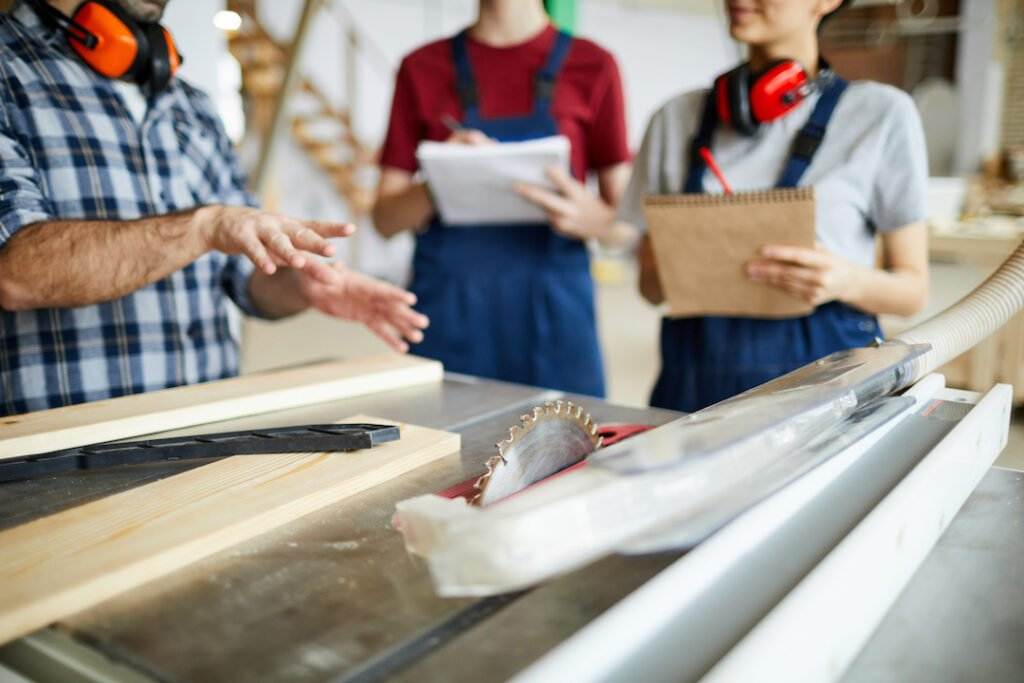Table saws are versatile pieces of equipment both on a job site and in a shop, where practicing safety should be exercised. They are used for making straight cuts in wood, either across or with the grain.
When operating a table saw, it is important to be as safe as possible, as these pieces of equipment are capable of inflicting serious injuries when not handled properly. This guidance outlines common table saw hazards and proper safety precautions.
Table Saw Hazards
As one might expect, the most common injuries when using a table saw are serious cuts to the hands and fingers. In severe accidents, an operator can even have a finger or their entire hand amputated by the spinning blade. When using a table saw, be careful to avoid the following hazards:
- Entanglement—Loose clothing or jewelry, and long hair can get caught by the rotating blade.
- Power transmission—Typically, table saws are powered by an electric motor and belt that can cause harm to the operator if they come into contact with the equipment.
- Kickback—Material can get caught in the saw blade and be thrown back into the operator. This is more common when cutting with the grain (ripping).
- Projectiles—Table saws can sometimes spit out flying projectiles such as splinters, chips or even broken teeth from the saw blade.
Table Saw Precautions
There are a number of things that you can do to avoid injury and accidents while using a table saw. When using table saws, keep the following safety tips in mind:
- Make sure that the table saw guard is properly adjusted according to the thickness of the material that you are cutting and that it remains in contact with the material.
- Be certain that the table saw blade is set at the correct height.
- Always watch your hand placement when feeding a table saw.
- When cutting smaller pieces or pushing material past the blade, use push sticks in order to keep your arms, hands and fingers as far away from the blade as possible.
- Be sure that the blade you are using is sharp to reduce the chance of material getting caught.
- Always wear appropriate personal protective equipment while operating a table saw.
- Avoid being in the path of kickback by standing to the side of the blade when ripping.
- If you are ripping, use additional safety equipment, such as anti-kickback fingers to hold the stock down, and a spreader to keep the material from squeezing the saw and reduce the chance of kickback.
If you have any questions or concerns about the use of table saws in the workplace, please contact your supervisor.








